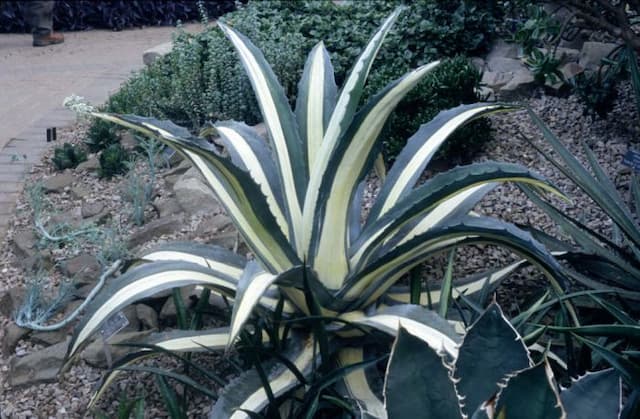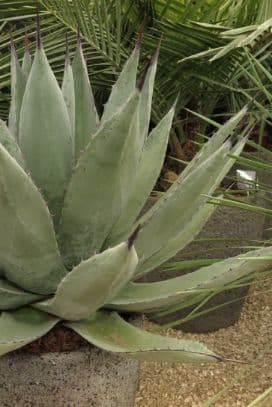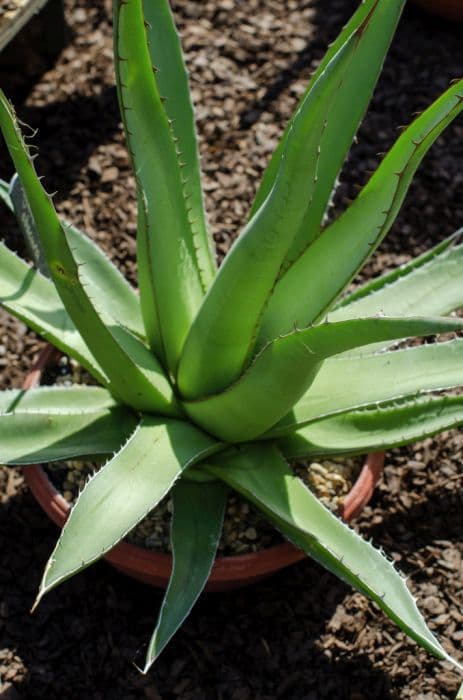Plantain Lily Hosta 'Hydon Sunset'

ABOUT
The Hosta 'Hydon Sunset' is a perennial garden plant known for its ornamental foliage. Its leaves are a striking feature, boasting a blend of yellow and green hues. As the season progresses, the yellow may intensify to a golden color, adding brightness to shaded garden spaces. The leaves themselves are heart-shaped with a slightly wavy edge, which adds a touch of textured beauty to the plant's overall appearance. Hosta 'Hydon Sunset' displays a mounded habit, with the leaves arranged in a somewhat overlapping pattern that forms a symmetrical, lush clump. In the summer, the plant produces delicate flowers that rise above the foliage on tall, slender stalks. These flowers are usually a pale, lavender color and are shaped like small bells or trumpets. They bring an additional layer of interest to the plant and are known to attract pollinators such as bees. The overall visual impact of Hosta 'Hydon Sunset' is one of a cool, calming presence, with its variegated leaves creating a tapestry of colors. It is a popular choice for gardeners looking to introduce a splash of color in shady areas, where few plants can flourish with such ornamental charm.
About this plant
 Names
NamesFamily
Asparagaceae
Synonyms
Plantain Lily, Funkia
Common names
Hosta 'Hydon Sunset'
 Toxicity
ToxicityTo humans
Hostas, in general, are not considered highly toxic to humans. However, if ingested, they can potentially cause mild stomach upset. It is uncommon to experience severe symptoms from eating hostas, but as with any non-food plant, it's advisable to avoid ingesting it.
To pets
Hostas are known to be toxic to pets, particularly to dogs and cats. If a pet ingests part of a hosta plant, they may experience symptoms such as vomiting, diarrhea, and depression. The plant contains saponins, which are chemicals that can be harmful if consumed in significant quantities. If you suspect your pet has eaten part of a hosta plant, it is important to contact a veterinarian.
 Characteristics
CharacteristicsLife cycle
Perennials
Foliage type
Deciduous
Color of leaves
Varies
Flower color
Lavender
Height
1 feet 6 inches (46 cm)
Spread
2 feet 6 inches (76 cm)
Plant type
Herb
Hardiness zones
3
Native area
Asia
Benefits
 General Benefits
General Benefits- Easy to grow: Hostas are known for being low-maintenance and easy to care for, making them suitable for both novice and experienced gardeners.
- Shade tolerance: Hostas, including 'Hydon Sunset', thrive in shady areas where many other plants struggle.
- Attractive foliage: 'Hydon Sunset' is appreciated for its ornamental leaves, which can add visual interest to gardens.
- Soil adaptability: This variety is adaptable to a range of soil conditions, though it prefers well-draining, nutrient-rich soil.
- Drought resistance: Although they prefer consistent moisture, established Hostas can tolerate periods of drought.
- Long-lived perennials: Hostas are perennials, which means they can come back year after year, reducing the need to replant annually.
- Architectural interest: Their lush foliage and growth habit can be used to create structure and form in garden design.
- Variety of uses: Hostas are versatile and can be used in many garden settings, including borders, containers, and as ground cover.
- Seasonal changes: Hosta's foliage changes as the seasons progress, offering different looks throughout the growing season.
- Low pest and disease susceptibility: While slugs can be an issue, hostas are generally resistant to many pests and diseases.
 Medical Properties
Medical PropertiesThis plant is not used for medical purposes.
 Air-purifying Qualities
Air-purifying QualitiesThis plant is not specifically known for air purifying qualities.
 Other Uses
Other Uses- Container Gardening: Hostas, including 'Hydon Sunset', are suitable for container gardening, giving flexibility to move plants to aesthetically pleasing locations or to control light exposure.
- Variegated Foliage Display: The leaves of 'Hydon Sunset' hostas can be used in floral arrangements to add a variegated green and yellow foliage display, enhancing the arrangement's visual interest.
- Natural Groundcover: These plants can serve as a living mulch, covering the ground to retain soil moisture and suppress weeds.
- Artistic Inspiration: Artists and photographers may use the distinctive foliage of 'Hydon Sunset' as a subject or backdrop for their work, capturing the interplay of light and leaf patterns.
- Edging Plants: Hostas can be planted along the edges of garden paths or flower beds to create a neat, bordered look that defines garden spaces.
- Shade Garden Accent: 'Hydon Sunset' can be used as an accent plant in shade gardens, drawing attention to specific garden features with its colorful foliage.
- Habitat Provision: In garden ecosystems, hostas can provide habitat and shelter for small wildlife species such as frogs and beneficial insects.
- Seasonal Interest: The plant offers seasonal interest with its late spring to early summer flowers, adding another layer of beauty when most of the garden is focused on foliage.
- Leaf Casting: Create decorative leaf castings using Hosta leaves as molds to preserve their unique shapes for garden ornaments or indoor decoration.
- Green Roof Plantings: Due to its hardiness and low maintenance, 'Hydon Sunset' can be incorporated into green roof designs to help absorb rainwater and provide insulation.
Interesting Facts
 Feng Shui
Feng ShuiThe Hosta is not used in Feng Shui practice.
 Zodiac Sign Compitability
Zodiac Sign CompitabilityThe Hosta is not used in astrology practice.
 Plant Symbolism
Plant Symbolism- Resilience: Hostas, also known as Plantain Lilies, can thrive in a variety of conditions and are known for their ability to bounce back after adverse weather, symbolizing the human capacity to recover from challenges.
- Endurance: Plantain Lilies have a long lifespan and can grow for many years, representing enduring life and persistence.
- Adaptability: Due to their shade tolerance, Hostas symbolize the ability to adapt and prosper even in less-than-ideal situations.
- Heartiness: These plants are exceptionally hearty and robust, making them a symbol of strong constitution and vigor.
- Devotion: In some cultures, the durability and presence of Hostas in a garden through the seasons may represent steadfastness and loyalty in relationships.
 Water
WaterHostas, including 'Hydon Sunset', should be watered deeply and thoroughly rather than frequently and shallowly. They prefer to have consistently moist soil, so watering once a week should be sufficient, providing about an inch of water each time, which translates to about 0.623 gallons per square yard. During hot or dry spells, they may need additional water to maintain moisture. Make sure not to overwater, to prevent root rot. Always water at the base of the plant to avoid wetting the foliage, which can lead to fungal diseases.
 Light
LightHostas like 'Hydon Sunset' thrive best in partial to full shade conditions. They can tolerate morning sunlight but should be protected from the harsh afternoon sun to prevent leaf scorch. A spot that offers dappled shade or light that is filtered through taller trees is ideal. Hostas are versatile in light adaptability, but their variegation can become less pronounced if they are exposed to too much direct sunlight.
 Temperature
TemperatureHostas, including 'Hydon Sunset', prefer moderate temperatures and will flourish in zones where the temperature ranges between 60 to 85 degrees Fahrenheit during the growing season. They can tolerate a minimum temperature down to about 30 degrees Fahrenheit before going dormant. The ideal growing conditions for hostas are temperatures that remain consistently between 70 to 75 degrees Fahrenheit. They're generally hardy and can survive cold winters but should be protected from extreme heat.
 Pruning
PruningPruning of 'Hydon Sunset' Hostas primarily involves the removal of dead or damaged leaves, which can be done at any time to maintain the plant's appearance and health. Periodic removal of spent flower stalks will encourage new growth. At the end of the growing season, typically after the first frost, cut back the foliage to an inch above the ground to prepare it for winter. Pruning is usually required annually, during late fall or early winter.
 Cleaning
CleaningAs needed
 Soil
SoilHostas prefer rich, well-draining soil with a pH range of 6.5 to 7.5. A good soil mix for Hosta 'Hydon Sunset' would include equal parts of loamy garden soil, peat moss, and perlite or vermiculite to ensure proper drainage and aeration. Incorporating organic matter such as compost or well-rotted manure will also provide essential nutrients and enhance soil structure.
 Repotting
RepottingHosta 'Hydon Sunset', commonly known as Plantain Lily, generally requires repotting every 3 to 5 years. Repotting should be done in the spring before the growing season starts, or in the fall after the plant has finished blooming. If the Plantain Lily is growing in ideal conditions and is not overcrowded, it may not need to be repotted as frequently.
 Humidity & Misting
Humidity & MistingHosta 'Hydon Sunset', also known as Plantain Lily, thrives in average to high humidity levels and can tolerate the humidity found in most outdoor garden settings. Ideally, maintaining environmental humidity around 50% to 60% will keep the Plantain Lily happy and healthy, as it mimics its natural woodland habitat.
 Suitable locations
Suitable locationsIndoor
Place in bright, indirect light, ensure high humidity, and water when topsoil is dry.
Outdoor
Plant in a shaded spot with well-draining, rich soil; keep moist.
Hardiness zone
3-9 USDA.
 Life cycle
Life cycleHosta 'Hydon Sunset', commonly known as Hosta, begins its life cycle with seed germination, which occurs in moist soil with warm temperatures in the spring. After sprouting, the seedling stage is characterized by the emergence of initial leaves and root development, establishing the plant in the garden. As it enters the vegetative growth stage, Hosta 'Hydon Sunset' produces distinctive foliage with variegated leaves that expand to form a lush clump. Mature Hostas reach the flowering stage during the summer, sending up tall scapes that bear bell-shaped flowers, usually attracting pollinators. After blooming, seeds develop and are dispersed in the late summer or fall, completing the reproductive cycle. During winter, Hosta 'Hydon Sunset' enters dormancy, with leaves dying back to the ground, conserving energy in the roots until the next growing season begins.
 Propogation
PropogationPropogation time
Late spring to early summer
The Hosta 'Hydon Sunset', commonly known as Hosta, is most commonly propagated through division. The best time to divide Hostas is in the early spring or late summer to early fall. This allows the divisions to establish their root systems during the cooler months. The division is done by gently lifting the entire clump from the ground with a shovel, then carefully separating the clump into smaller sections by either teasing the roots apart by hand or cutting them with a sharp knife or spade. Each section should have at least 2-3 shoots and a healthy portion of roots. The new divisions are then replanted at the same depth they were growing before and watered thoroughly. This method of propagation not only rejuvenates old clumps but also helps to increase the number of Hosta plants in a garden quickly and efficiently.









